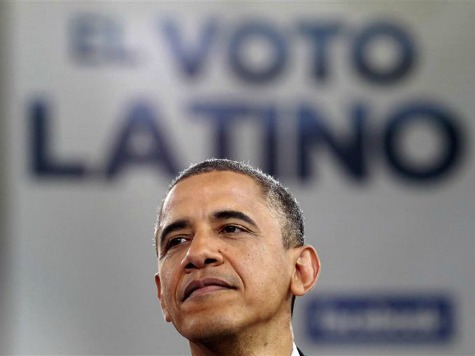“This is either an unfortunate coincidence or a cruel joke,” Daniel Garza writes in the San Antonio Express-News on the topic of Obamacare. Between its reliance on the young insured, an unintelligible Spanish website, and significant limits on doctor choice, the Affordable Care Act disproportionately hurts Latinos.
After the weeks-long delay of the Spanish version of HealthCare.gov, CuidadodeSalud.gov, and the delivery of a product so grammatically deficient Spanish speakers could not use it, statistics on the Affordable Care Act show that Latinos are affected more than most groups by skyrocketing premiums and the limits on choosing a doctor. Garza explains on the latter note that choosing a doctor is more difficult for many latinos than for non-Latinos because of language and demographics. Garza cites a report from the National Hispanic Medical Association that notes that Latinos prefer doctors they can relate to culturally, that “understand [our] families’ dynamics and traditions.”
This makes sense; even English-speaking Latinos feel more comfortable talking about sensitive health issues in their first language, or even in English but with someone who understands their cultural background and context. This is human and not at all unique to Latinos; local doctors thrive on this instinct. Latinos are hurt more by limits in doctor choice networks than the average American, however, simply because there are fewer doctors with that cultural background. Garza reports that only five percent of doctors nationwide are Latinos, so the fewer the options, the less likely that a patient will find a doctor with whom they feel comfortable.
Finding a doctor they like is only a problem, of course, for those already insured. Garza highlights an even bigger problem for Latinos: the high premiums that will make it almost impossible for many to keep up with their insurance payments. The system works in a way that siphons a great deal of money from a pool of mostly healthy younger members and uses that to fund the medical needs of older groups. Latinos are disproportionately young; therefore, they are hit harder by the high premiums for the young insured.
While Garza writes of the Latino population of Texas–42% of the state, according to the latest Census–the results of a policy that so directly disadvantages one group are clear nationwide. In California, for example, the state exchange is bleeding money because of the lack of Latino enrollment; while 29% of the state speaks Spanish as a main language, only 5% of those enrolled in the state exchange do. That’s less than five thousand people in a state of 38 million.
Garza’s is a fascinating analysis of how, despite Democrats spending millions on targeting Latinos to use HealthCare.gov, the lack of thorough analysis of the impact of such a law is creating an especially dreadful situation for this group. He questions whether Latino leaders were considered when the bill was drafted or whether anyone in Congress considered that no population needs a wider choice of doctors and is more likely to harbor so-called “young invincibles” than the fastest growing minority in America.
The sad reality is that they not only considered Latinos generally when drafting the bill and still came up with such a directly damaging system that Garza calls it a “cruel joke,” but that Health and Human Services Secretary Kathleen Sebelius has hinted at the fact that the system is not designed to work without immigration reform and the inclusion of millions more Latinos in enrollment, legally in the country or not. The success of the ACA is, according to Sebelius, “another very keen reason why immigration reform is so important.” While it is important to note that China contributes a significant number of illegal immigrants to the country every year–that is to say, “undocumented immigrant” does not necessarily mean “Latino”–in the context of the politics of immigration reform, Mexican and South American illegal immigrants are paramount in the discussions.
The push to use HealthCare.gov as a selling point for the Democratic Party to the growing Latino voter pool seems particularly sinister given the compounded effects of the law. When Latinos, as Garza notes, are already less likely to buy insurance and less likely to go to the doctor, the fact that the average age in the Latino population is 27–just a year above the limit for being under a parent family plan–makes it clear that many will simply choose to go without insurance or do their best to avoid using HealthCare.gov. They are being asked to pay more for a service that gives them less–and, because of their age, carry a larger share of the national burden. Without significant improvements to the system, starting with the embarrassingly wrong Spanish on CuidadodeSalud.gov, Latinos will be left with few positive impressions of the healthcare law.

COMMENTS
Please let us know if you're having issues with commenting.